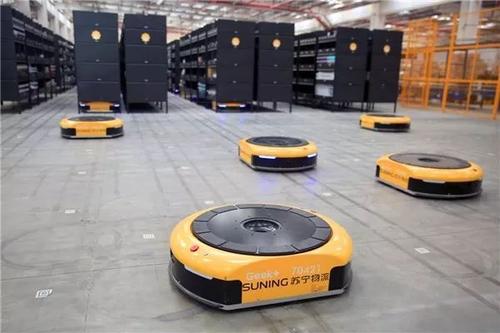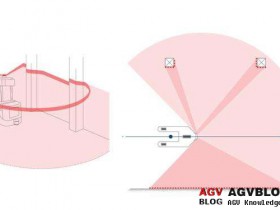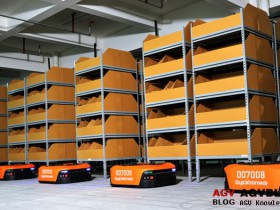AGV's autonomous traffic control method consists of the following steps: AGV‐A obtains the intersection identification, and judges whether AGV‐A is in the control area according to the intersection identifier; AGV‐A judges that it is in the control area, through the short-distance communication module The other AGV sends a first traffic message, where the first traffic message includes: an AGV-A identifier, an intersection identifier A, a line A, an AGV-A state; and the AGV-A receives a second traffic message sent by the AGV-B, the first The second traffic message includes: the identity of the AGV‐B, the intersection identification B, the line B and the status of the AGV‐B; the AGV‐A determines that the AGV‐B and the AGV‐A are in the same control area according to the intersection identification B, and obtains the Whether line A has an intersection with line B; if line A and line B have intersections and the second traffic message is received earlier than the first traffic message, AGV-A implements traffic control and AGV‐ The identifier of B is stored in the control pool M area, and the AGV identifiers in the control pool are all stored in time; if the AGV-A receives the third traffic message sent by the AGV-B, the AGV in the third traffic message is acquired. ‐B status, such as AGV‐B The state is the state of driving out of the control zone. AGV‐A deletes the AGV‐B mark from the control pool. If there is no sign in the control pool, AGV‐A releases the traffic control and adjusts the state to the normal driving state; The AGV‐B has not received the traffic message sent by the AGV‐B, and the AGV‐A deletes the AGV‐B mark from the control pool. If there is no sign in the control pool, the AGV‐A deactivates the traffic control and adjusts the state to the normal driving state.





